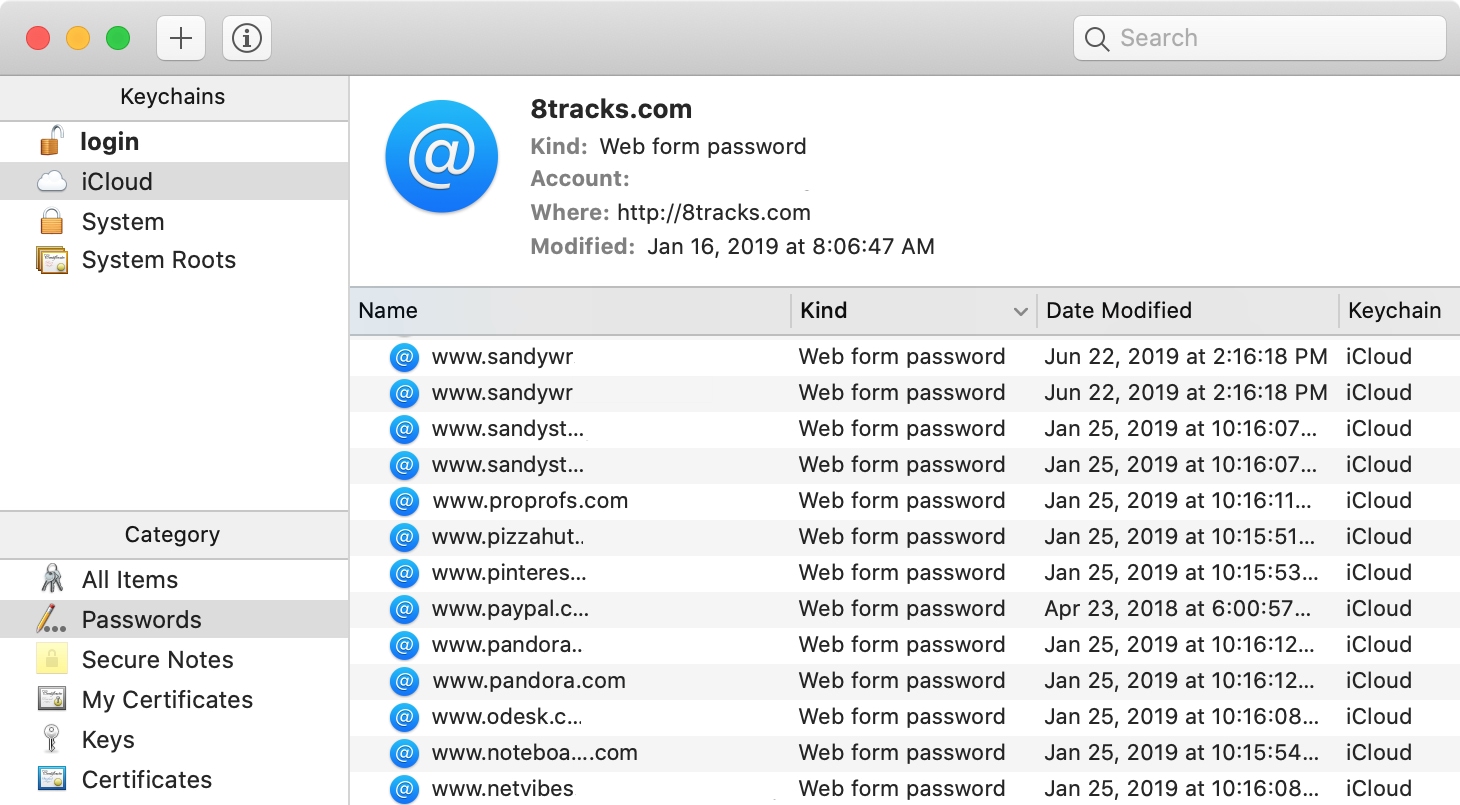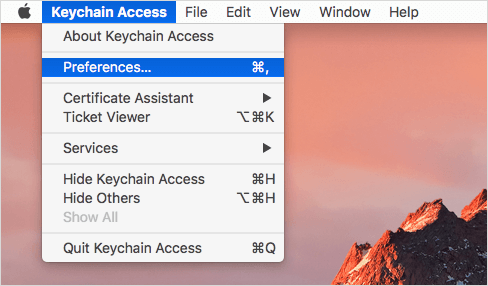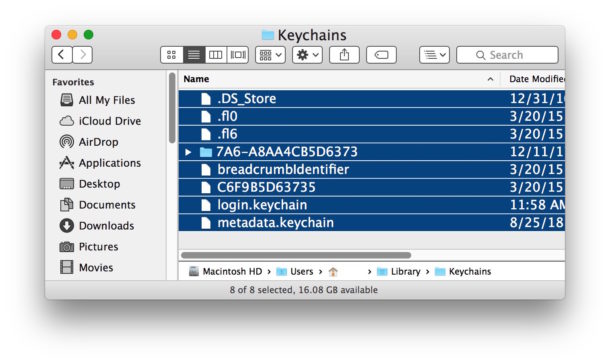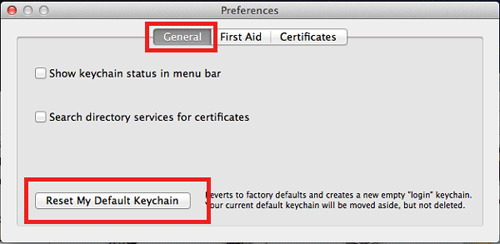

- #Mac keychain access file how to
- #Mac keychain access file verification
- #Mac keychain access file code
- #Mac keychain access file Pc
- #Mac keychain access file mac
Apps that ask for TOTP verification weave through Step Two, which creates a temporary password you can use to access apps.
#Mac keychain access file code
Step Two allows you to manually add your own credentials, or use an app’s QR code to automatically add usernames and passwords to the Step Two vault.
#Mac keychain access file mac
And the best Mac app for this purpose is Step Two. Keychain access is a great storage container for passwords, but the best method for securing accounts is to use time-based one time passwords (TOTP) as a two-factor authorization method. Passwords should always be secure, never duplicated, and hosted safely.

If this doesn’t work, there are a few other solutions that may work for you. This is the most common fix for the accountsd popup. In the new window, uncheck the “Lock after” and “Lock when sleeping” options.

Select “Change Settings for Keychain “login”” from the drop down menu.Right click the “login” module on the right side of the app window.Though accountsd and iCloud Keychain are interchangeable, there may be some passwords that are still saved locally instead of in the cloud. Here are a few steps to remedy the issue: Turn Keychain Auto-Lock OFF Now that we know what keychain and accountsd are, and how they work together, let’s address the core issue: that pesky popup notification!
#Mac keychain access file how to
How to Fix "Accountsd Wants to Use the Login Keychain" When it can’t, it continues to prompt you to allow access to keychain so it knows to trust you. Each time you open an app, it attempts to verify your credentials through accountsd. When you first login to an app on your Mac, it saves those credentials in keychain access, and accountsd is used to access the necessary information.

Apps may still open, but you may receive a prompt that accountsd needs access to the keychain for things to operate further. Plainly put, your keychain is not synced with the app or service you’re using. Don’t worry nothing is wrong! Why does this message appear on your Mac? If you were to login to these apps on your Mac – then the iPad – iCloud keychain (or accountsd) would sync that data across devices to make the sign-in process smoother.įrom time to time, you may see a popup notification that accountsd needs access to the keychain. Microsoft’s suite of apps, like Word and Excel, each have one or more keys in keychain access. The accountsd framework also goes by another name you may be more familiar with: iCloud keychain.Īccountsd provides apps and services access to the appropriate usernames and passwords for those apps. Errantly removing credentials can cause serious usability issues for apps, so tread lightly. It’s a system level application, holding sensitive information that often should not be deleted or altered in any way. Servers, email accounts, websites, and other items may prompt you to save your password for future use.īy design, keychain access on your Mac is difficult to find, and even less user friendly. It also works for cloud-based and web services. It helps reduce the number of usernames and passwords you have to enter when using apps on a Mac. We'll cover both of these below.Keychain Access is a native macOS app which houses passwords and other account details. Keychain Access can help you in many useful ways, such as letting you find forgotten passwords or edit a saved password.
#Mac keychain access file Pc
Related: How to Use iCloud Keychain Passwords on a Windows PC The Mac places keychain files in multiple locations on your hard drive however, the contents of all these various keychain files are combined in the Keychain Access app for easy access. Keychain can also store secure notes, private keys, and certificates. Keychain is Apple's password-management system, which stores a variety of passwords for emails, websites, Wi-Fi networks, encrypted disk images, and more. Here's how to edit passwords in the keychain on your Mac. It keeps a secure list of all the saved passwords in the keychain, which you can access and edit later on if needed. Fortunately, your Mac can store your passwords and fill them in automatically when needed. Most of us constantly juggle dozens of passwords, with different login details for our Mac, emails, social media accounts, and more.


 0 kommentar(er)
0 kommentar(er)
